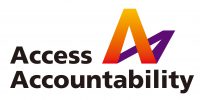Click here fore PART 2 of this article.
After you have chosen a viable research question, target group, and sample pool, the next step is to choose the survey that will produce the best results. When choosing a survey, keep in mind the characteristics of a survey pool as well as any limitations it presents. You also need to make sure to provide a suitable consent form for the specific survey you have chosen. This article will list the different types of surveys and provide real life case studies and descriptions of how to pick the right survey. At the end of each type of survey there will be a link to sites that give more detailed information on how to construct your survey. For more information on informed consent, see this video or article.
Alongside choosing the correct survey, you should consider the:
- type of sample pool,
- survey objective,
- schedule (time constraint),
- physical limitations (your/organization’s background knowledge/staff capacity etc.),
- any legal precautions,
- source of information, accessibility/ease of use for survey pool, and
- your organization’s budget (for survey).
After determining the variables above, you need to determine whether to run a questionnaire or interview type survey. A questionnaire is used when obtaining large quantities of general data on a large scale, whereas an interview gathers in-depth data regarding issues or events. To better inform you, the types of survey methods are split into two different articles; this is the first one (questionnaire) and you can click on the link above to go to the second part (interviews).
Questionnaire
An informal method of data collecting, usually closed-ended questions followed by a list of set options the sample pool can choose from. Used mostly when wanting to obtain a general opinion from a large sample pool, or when providing statistics for a large human rights organization (Eg. United Nations, Human Rights Watch, etc.).
Web Questionnaire
Web questionnaires are primarily used to get a general consensus/public opinion for a sample pool, with access to computers, on a general issue or feelings towards a targeted cause or event. If done correctly, these types of surveys can be quite effective when targeting a wide sample pool across a large area.
Case Example: A survey conducted by ILGA-Riwi 2016, in 2016, of the LGBTI community provides a good example of this method. The survey fits within the questionnaire bracket because it tested 53 States and 65 countries, to obtain a wide-angle/global viewpoint on people’s attitudes towards LGBTI people and issues. The results were able to predict public feelings towards pre-determined issues in the following five to ten years in certain regions (Africa, Asia, America, Europe, and Oceania). With the information found, advocates on these issues in the countries concerned will be better equipped to plan their strategy around LGBTI communities and issues.
Paper Questionnaire
For countries where the sample pool is illiterate, this method is useful. The surveyor sits down with participants and reads the questions out loud. Paper questionnaires for literate populations are also used in other settings, such as academic settings when there is a need for multiple people to respond at the same time.
Case Example: A student at the University of Massachusetts conducted a survey at three High Schools in South Korea (Incheon, Seoul, Goyang).
The survey aimed to assess young people’s perceptions of unification between North and South Korea. It inquired into whether the education system or family/peers provided greater influence. Since each class averaged 30-35 students (a total of 273 students) the surveyor chose a paper questionnaire as one of the survey methods. The survey was distributed by one teacher at each school (3 teachers total) and was to take a total of 15-20 minutes to complete. After finishing, all teachers sent back the individual questionnaire sheets to the surveyor.
The method did demand a large amount of time for manually inputting the data. There was also greater room for human error where the surveyor might have misinterpreted or misread the answers. However, the method provided satisfactory and informative results.
Mail Questionnaire
For membership/management, a mail questionnaire will usually ask members supporting an NGO or other organization opinions on the mailing service or other operational concerns. This is used by large NGOs with a significant number of donors to improve various services (i.e. mailing, donation methods, monthly updates, etc.).
Sometimes, in the government sector, this method is used for (population) census. It is used across the world in various nations to get a semi-reliable gauge on people who are living in rural or impoverished areas. If you wish to look up an example of this see China as a reference. To see different types of online questionnaire options, click here.
Click here if you want to know different types of questions used in surveys, and here on how to begin a survey.
Last Updated: April 2018
Author: Haley Joy Herbig
